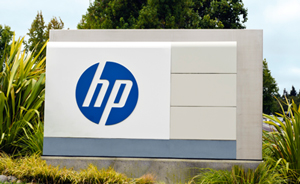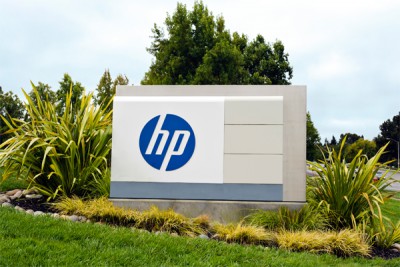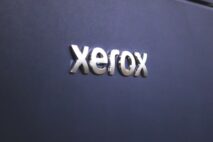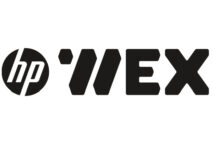Well, the HP split announced a little over a year ago (see “The Great Divide: HP Splits in Two”) is now complete. What I termed “the great divide” took place at the beginning of November, although obviously there were months of preparation and steps taken in advance of the move, which established two separate publicly traded companies: Hewlett Packard Enterprise (HPE), which consists of the Enterprise Group, Enterprise Services, Software, and Financial Services, and HP Inc. (HPQ), which consists of Personal Systems, which is responsible for PC sales, and Printing. HP Inc. issued a press release on November 2 in which it said it would usher in a new era of innovation.
But perhaps more interesting than the November 2 press release was a recent article from HP Inc. President and CEO Dion Weisler in the HP Technology at Work e-newsletter. In it, Mr. Weisler echoed the press release’s themes of reinvention and innovation but also provided a few more specifics. Mr. Weisler wrote, “The creation of HP Inc. enables us to have a singular and exclusive focus on our printing and personal systems businesses, allowing us to compete vigorously in our core, and pursue growth in the medium term from natural adjacencies, all while providing the time and cash flow necessary to create new and exciting categories for the future.”
As for those adjacencies HP Inc. will explore, Mr. Weisler said, “You will see us tap into growth in natural adjacencies, like reinventing the copier market with HP PageWide Technology, driving more pages from analog to digital with the broadest graphics printing portfolio, and expanding commercial mobility in key verticals. And finally, the future of HP Inc. is all about category creation and bringing wave 2 and wave 3 technologies to life. As the 2D and 3D worlds collide, we have created an entirely new category that we call Blended Reality, leveraging both immersive computing and 3D Printing—to take things from the physical world, into the digital world, and back out to the physical.”
Closer Look at the Adjacencies
Let’s take at three of the adjacent markets HP plans to expand into. None of them really count as “new news” for HP and they share one interesting commonality: HP PageWide technology.
For quite some time now, the industry has heard about HP’s intent to grab a share of the 3D printing market. The firm moved a big step closer in this regard in October 2014, when HP revealed more about its plan to get into the 3D printing business with the 2016 release of its commercial, full-color MultiJet Fusion 3D printer (see “HP Officially Announces Its Own 3D Printing Technology”). This September, it was revealed that Stephen Nigro, formerly senior vice president of Imaging and Printing, would head a new 3D printing division (see “HP Shuffles Execs in Run-Up to November Split”). In a September 15 announcement about the new HP Inc.’s financial outlook, Mr. Nigro indicated the company sees an opportunity to tap into the 3D printing with its MultiJet Fusion technology, that the company’s first product will launch in 2016, and that the company will leverage its existing PageWide technology to disrupt the traditional manufacturing market (see “HP Presents Post-Split Financial Outlook, Announces Job Cuts”). Earlier this week, news broke that HP has opened a research and development center for 3D and even what has been termed 4D printing technology in León, Spain.
HP’s endeavor to drive more pages from analog to digital in the graphics business is not new either. Back in 2011, the company talked about transforming its business in part through converting more analog pages to digital in the graphics business (see “HP Analyst Briefing: IPG Is Innovating to Impact HP’s Transformation, Part 1”). In recent years, HP’s graphics business has been increasingly important for the company from a financial perspective. HP Indigo devices have been central in enabling HP to covert more analog pages to digital, but a growing number of HP’s commercial, industrial, and large-format solutions are deploying the same PageWide technology that is at the heart of the OfficeJet Pro X and OfficeJet Enterprise X machines and even HP’s 3D technology. Machines such as the T200/T300/T400 series color inkjet web presses and the PageWide XL 4000/5000/8000 large-format printer series employ HP’s PageWide technology as well.
While Mr. Weisler gave this adjacency only a one-phrase mention, it seems HP has plans to deploy its PageWide technologies in the A3 copier/MFP market, and that is big news. This is not the first time HP has hinted that it will do so following the split. The September 15 announcement noted above included comments from Enrique Lores, president of the Printing Business, who indicated that HP’s plans included “expansion into the A3 copier market where HP Inc. has an opportunity to significantly grow its market share.”
HP has tried, and tried, and tried again for years now to penetrate the A3 copier/MFP business. One less-than-successful past experiment was HP’s Mopier line of the later 1990s. HP has also rebadged other OEMs’ A3 machines: in the early 2000s from Konica Minolta and more recently (in 2013) from Sharp (see “HP Announces Partnership with Sharp on New HP-Branded S900 Series”).
Should HP use its PageWide inkjet technology in an A3 MFP, that would not be the firm’s first attempt. In 2006, HP announced that it would move into the copier market with its own A3 color MFPs, the CM8050 and CM8060, which were based on the company’s Edgeline page-wide inkjet technology. The Edgeline products did not prove the successes HP had hoped. After the Edgeline effort flamed out, HP reached an agreement with Canon in 2009 to resell Canon A3 copiers and MFPs via HP’s MPS organization.
For many years now, HP has wanted to tap into the A3 copier/MFP market with its own machines, preferably based on inkjet technology. It seems the firm believes it has the perfect technology to do so with its PageWide technology. It will be interesting to see if HP does indeed make another attempt to market A3 devices based on homegrown page-wide inkjet technology and, if so, what the firm’s plans are to distinguish its latest attempt from past less-than-successful efforts. We are also curious to learn more about what such an endeavor will mean for HP’s long-term manufacturing partnership with Canon. Canon manufactures HP’s LaserJet-branded devices and their consumables. While the Canon/HP relationship is one of the industry’s longest-term relationships and has been successful for both companies, we imagine that HP’s repeated attempts to compete against Canon in the A3 copier/MFP space may put some tension on the relationship.
Things to Watch
From everything I have seen HP Inc. say about its plans for the Printing business post-split, the company is hanging its plans for future growth on its PageWide technology. That is both exciting and worrisome. It is exciting because we are eager to see how this very scalable, super-fast printing technology can be deployed in products outside the desktop office inkjet market to ultimately enable HP to grow and innovate, as it has promised it will do post-split. It is worrisome for one big reason: the Memjet lawsuit.
In August, Memjet filed a patent-infringement suit against HP, asserting that HP’s PageWide technology infringes patents that Memjet holds on its own Waterfall page-wide color printing technology (see “Memjet Cries Foul, Claims HP Violated Its Print-Head Patents”). As part of the lawsuit, Memjet seeks a preliminary and permanent injunction against HP that would prevent it from selling machines that use the allegedly infringing PageWide technology on the United States. In October, HP fired back, denying Memjet’s claims and counterclaiming patent infringement against Memjet (see “Patent Showdown: HP Counterclaims Patent Infringement against Memjet”).
Whether this lawsuit progresses or is settled will be something to watch in the months ahead. While the outcome of the suit is uncertain, it is crystal clear that a win for Memjet would prove hugely disruptive to the new HP Inc.’s future plans.
I am also very curious to see what the new HP Inc. will report in terms of its fourth-quarter and year-end financials on November 24. As a brief perusal of Actionable Intelligence’s Actionable Briefings section of late illustrates, HP’s fellow printer OEMs generally had a tough time in their most recent fiscal quarter. When it announced its third-quarter results in August, HP saw Printing revenue shrink for the seventeenth consecutive quarter and reported that the business’s operating profit declined (see “HP Printer Business Impacted by Pricing Pressure and Lower Supplies Sales in Q3”). Will HP Inc. have more of the same to report in Q4 or will there be any positive developments?
Stay tuned to Actionable Intelligence for more on HP Inc. We plan to bring readers news on HP’s financials and the Memjet suit later this month and are eager in the months ahead to cover HP’s 3D printing efforts as well as whatever A3 products the firm may launch to take on copier vendors.








1 Comment
Interesting blog. when will be loan-ch this HP Inc photocopier in market. I liked it’s all feathers. As this machine work properly it will be save my time or money. And i want to use this HP or PageWide technology in my business. I also want to recommended for this one.